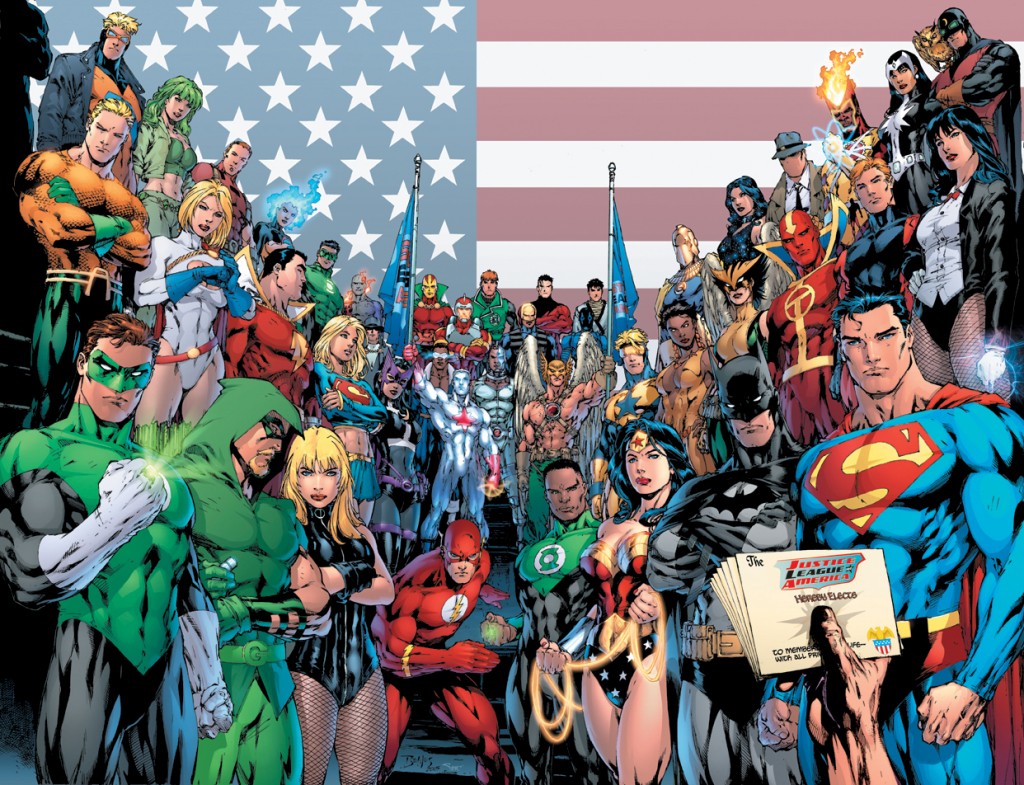THE COMIC BOOK WORLD has made huge strides toward better representation in the past few years. It seems, however, that one of the Big Two is content to ignore the impressive sales of its competitors’ titles and continue down the well-trodden path of telling cishet white men’s tales. DC Comics’ “Rebirth” line won’t make any efforts to tell the diverse stories that today’s readers crave. Instead, “Rebirth” courts those individuals who consider themselves diehards, and ignores the rest of us.
At a time when Valiant Entertainment’s Faith shatters records left and right, Jughead comes out as asexual, and Marvel’s “All-New, All-Different” manages to tell authentic stories about LGBTQ heroes and heroes of color, DC’s choice to head in the opposite direction is almost inexplicable. Comments from CCO Geoff Johns scrape away all mystery about “Rebirth,” however. DC’s new line is a gatekeeper, designed to pander to privileged fans who have never had to search long and hard to find their reflections wearing capes, tights, and masks.
An interviewer from comicbookresources.com observed that “Rebirth” seemed tooled to appeal to “more long-time fans,” and asked Johns what DC’s line would do for new readers. He replied:
If you look at Green Lantern: Rebirth or The Flash: Rebirth, absolutely it’s targeted to fans who’ve read a lot of comics. Who have as many comics as me. But at the same time, people can pick it up, and there’s enough in Green Lantern: Rebirth for someone to pick it up who has never read Green Lantern and understand what’s happening. With “DC Universe: Rebirth,” it’s the same thing. If you have, like me, long boxes of DC Comics, you will be very happy. If you’ve never read a DC comic before, you won’t be too lost. This is definitely for comic book readers more than it is for casual readers, just like Green Lantern: Rebirth, but that doesn’t mean it’s exclusive of them.
Now, let’s stop briefly and consider Green Lantern: Rebirth. In her own excellent unpacking of the “Rebirth” debacle, Comics Alliance’s Elle Collins points out the glaring problem with this recent mini-series. It has virtually no appeal to anyone who isn’t a fan of Silver Age Green Lantern, because, instead of centering on John Stewart — the Green Lantern with whom Justice League fans will be the most familiar — it focuses on Hal Jordan. You might remember him as the white guy from that abysmal Green Lantern movie, which grossed less than 10 percent above budget when it hit theaters back in 2011.
When Johns differentiates “comic book readers” from “casual readers,” he draws a line between cishet white males — like himself — and everyone else: the people of color, the women, the LGBTQIA individuals. Whether we consider ourselves comic book fans or not, we are the outsiders in the mind of DC’s CCO.
Writing for Panels, Jessica Plummer dubs Johns’ reply “one of the most shortsighted, self-involved, exclusionary statements I’ve ever heard from a comics professional in my life.” Plummer is one of the “comic book readers” Johns references, but she knows she’s a dying breed. In order to get new lifelong fans to join the fold, DC has to court the casual readers who aren’t familiar with decades of comics lore.
Let’s revisit Green Lantern for a moment. Without putting too fine a point on it, let’s just say that the Green Lantern movie centered on Hal Jordan because Hollywood refuses to allow a person of color to lead a mixed-race cast. That being said, had Green Lantern been about John Stewart instead, it probably would have performed better at the box office, simply because it would have starred the Green Lantern that kids knew and loved. This point seems lost on DC.
It’s also lost on DC fans. In the days since I covered “Rebirth” for Bustle, fanboys have poured out of the woodwork to mansplain exactly how DC’s decision to pander to them is a good move, because the allegedly-diverse New 52 and DC You lines underwhelmed in stores.
Let me be clear: DC has offered a handful of diverse comics over the past few years. Some of those attempts at diversity have sold miserably, while others continue to avoid cancellation. It’s important to note that, unlike Marvel, DC relies largely on white men to tell their stories.
With the exception of the recent Miles Morales snafu, Marvel’s “All-New, All-Different” comic books have ensured that stories about characters from marginalized communities ring true. DC doesn’t take such care, which is why retailers attribute part of DC’s poor performance to subpar storytelling. When readers pull diverse comics from other publishers off the shelves and leave DC’s offerings behind, it isn’t because diverse comics don’t sell — it’s because DC’s stories lack authenticity. The publisher’s dogged, ill-advised pursuit of the cishet white male reader will only dig its $2M hole deeper.




-300x169.jpg)












